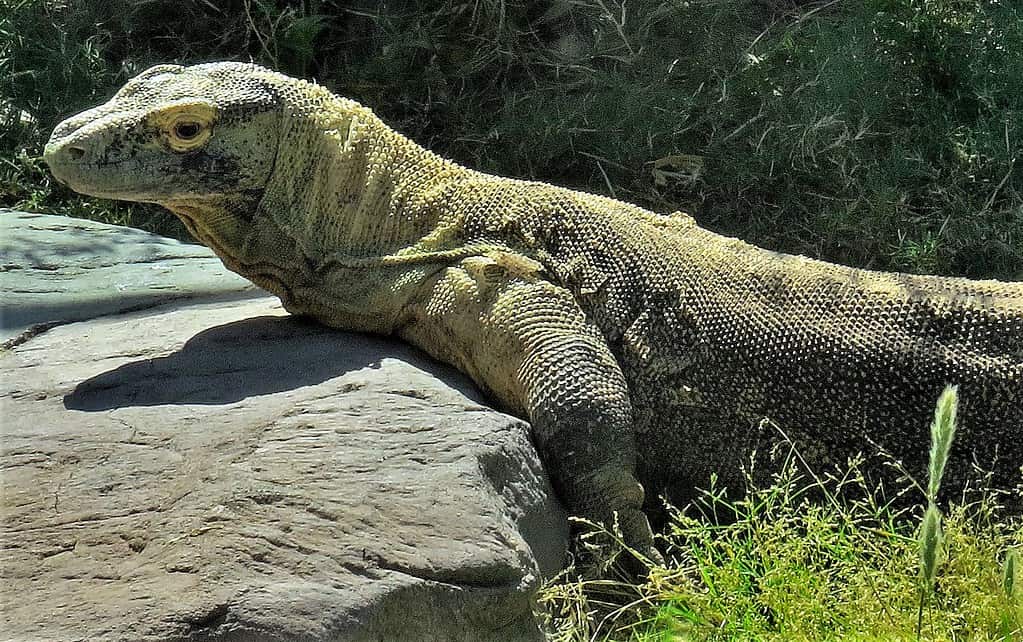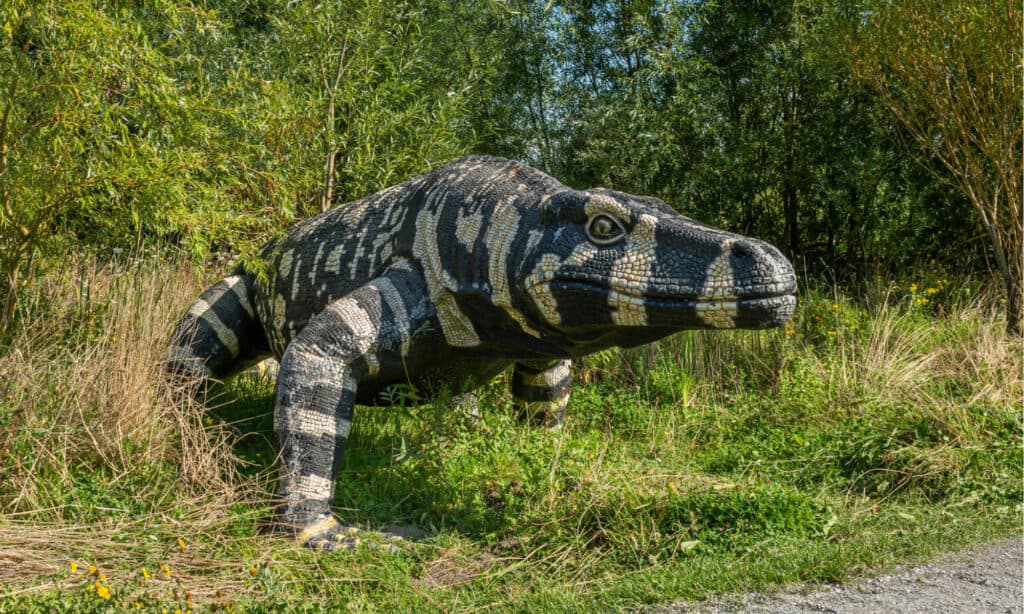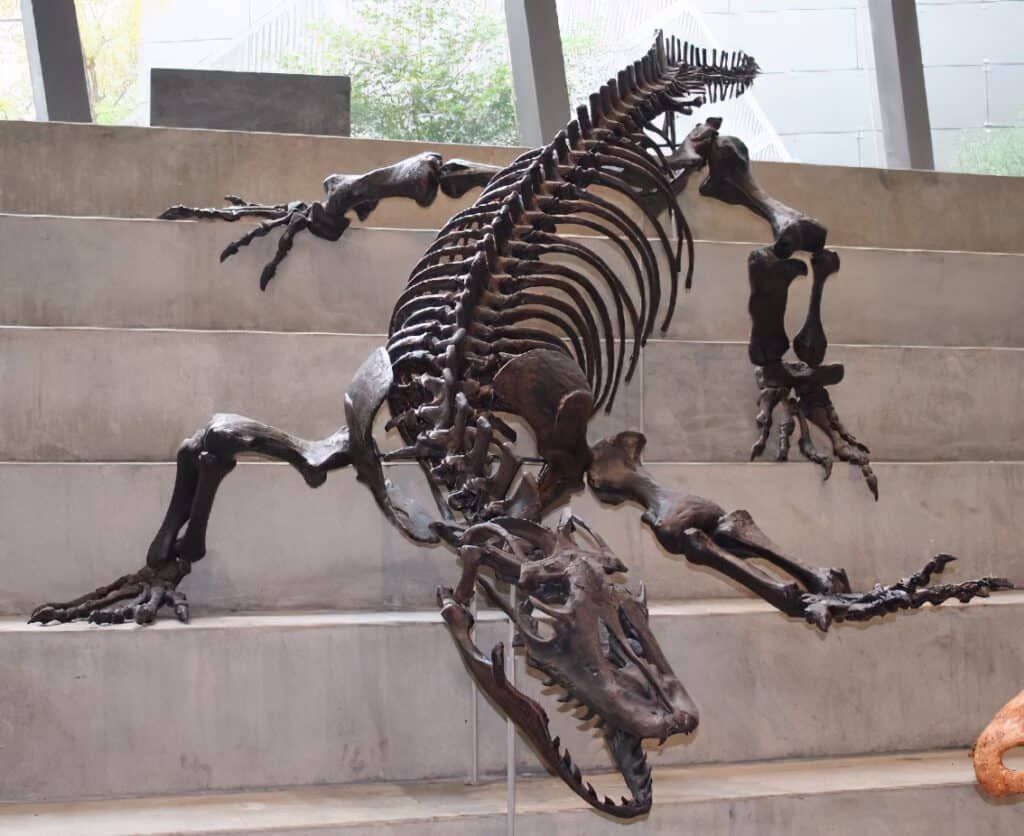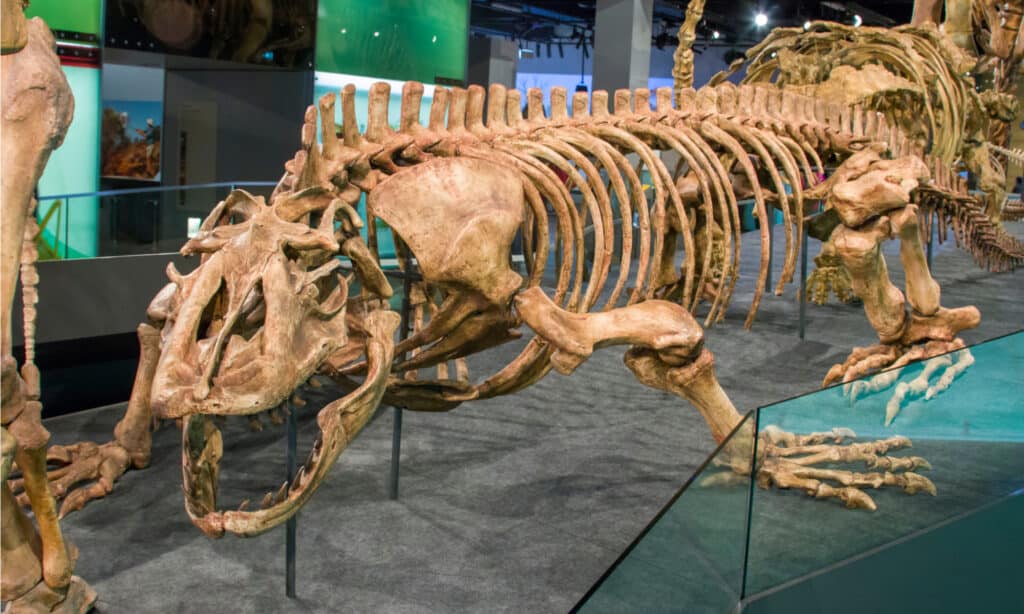In 1859, a man named Sir Richard Owen stumbled upon the remains of a gigantic monitor lizard. This lizard, dubbed the Megalania, is now known to be the largest lizard to have ever existed. Oddly enough, despite the youngest fossils of the creature being 50,000 years old, this creature bears a striking resemblance to a lizard that we all know and love in the present day: the Komodo dragon. In this article, we’ll be comparing the Megalania vs. Komodo dragons in a series of evaluations, from their physical traits to their behaviors. Who knows, you might be shocked by how much these two amazing creatures actually have in common!
Megalania Vs. Komodo Dragon: Physical Characteristics

What the
Komodo dragon
lacks in size, it certainly makes up for in speed!
©Scotwriter21 / CC BY-SA 4.0 – License
We can begin our comparison with appearances. As mentioned, the Megalania is known to be the largest monitor lizard in history! How big is that, though? Well, estimates place the creature somewhere between 700 and 4,000 pounds! This is certainly much larger than the Komodo dragon, which has an average weight of only 150 to 300 pounds.
Naturally, the Megalania’s prowess doesn’t stop at its weight- it’s also far longer than its present-day counterpart. The Megalania measures an estimated 15 to 23 feet in length, while the Komodo dragon comes in at somewhere between 6.5 to 10 feet.
But, what the Komodo dragon lacks in size, it makes up for in speed! The great mass of the Megalania causes the creature to have an estimated average top speed of 6 mph, while Komodo dragons have an average top speed of 11 mph.
Megalania vs. Komodo Dragon: Habitat

During the Pleistocene era in which the Megalania lived, there were a series of unpredictable ice ages.
©Erik Laan/Shutterstock.com
Something that both Megalania and Komodo dragons share is their choices of habitat. Geographically speaking, at least. You see, the location where the majority of the Megalania fossils were found was in the eastern region of Australia. Coincidentally, this is only a small leap away from the five Indonesian islands that Komodo dragons inhabit in the present day.
The period in which the Megalania prospered, the Pleistocene, was known for its series of ice ages. This means that the reptile must have had to adapt to many diverse environments in order to survive. On the other hand, the climatic conditions of the islands that Komodo dragons inhabit are notably different. In tropical climates with distinct wet and dry seasons, the temperatures that these modern lizards face are much more stable.
Megalania Vs. Komodo Dragon: Diet and Behavior

Both Megalania and Komodo dragons alike consume a carnivorous diet.
©Sergey Uryadnikov/Shutterstock.com
A characteristic that the Megalania and Komodo dragons share is their carnivorous tastes. A gigantic predatory lizard, it can be assumed that the average diet of a Megalania would consist of animals like kangaroos and dingos. Large animals were no problem for these beasts, as the Megalania possessed sharp, massive teeth that could easily take down even the largest of prey. In addition to these larger creatures, it’s likely that they also munched on things like birds or other, smaller lizards. Of course, this is marginally based on speculation.
The Komodo dragon also has incredible predatory capabilities, though they might not have the same levels of might on their side. Mostly, you can find Komodo dragons eating dead animals, snakes, and lizards. But, they don’t stop there! When they’re able to catch them off guard, the Komodo dragon won’t shy away from consuming a deer or goat. In comparison to the aggressive hunting methods of the Megalania, the Komodo dragon’s behavior can be perceived as far more tame. Don’t underestimate one of these reptiles, however, as it could land you in big trouble!
Megalania Vs. Komodo Dragon: Physiology and Adaptations

The physiological traits of both reptiles likely contributed to their status as apex predators.
In order to understand why both of these reptiles, the Megalania and the Komodo dragon, were able to successfully become apex predators in their respective environments, it’s important to evaluate their physiology. There is a particular evolutionary advantage that Komodo dragons possess that some speculate the Megalania had as well. This is their complex venom glands, secreting toxins that can lead to shock and blood loss in their prey.
Another physiological feature possessed by the Komodo Dragon is its ability to regulate its body temperature. Considering their lives were lived in an era of unpredictable external temperatures, it would be safe to assume that the Megalania had a similar ability.
How Understanding The Past Impacts The Future

Understanding ancient creatures like the Megalania is a vital part of protecting existing species.
©Danny Ye/Shutterstock.com
At this point, you’re probably wondering: “Why does this ancient, extinct lizard even matter?” While this is a fair question to hold, the truth is that it matters for a number of reasons. The primary reason, however, is that understanding how this creature became extinct can be essential to protecting and maintaining the lives of existing species. Species just like, of course, the Komodo dragon.
Not to mention, to not speak about this legendary creature means to forget its existence. In order to preserve its legacy, it is essential to be informed about the role it played so long ago. All creatures, even extinct ones, are important parts of the structure of our ecosystem!
The photo featured at the top of this post is © Nehrams2020 / CC BY-SA 3.0 – License / Original
Thank you for reading! Have some feedback for us? Contact the AZ Animals editorial team.







